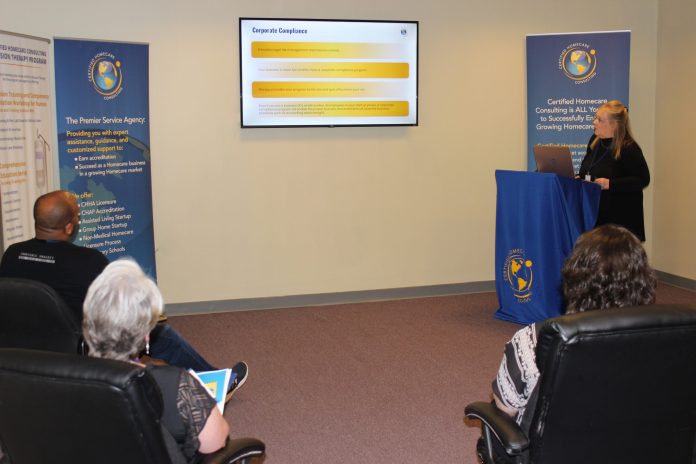Developing comprehensive home care policies is essential for ensuring high-quality care, regulatory compliance, and the safety and well-being of both clients and caregivers. These policies provide clear guidelines and procedures that help maintain consistency and standards in home care services. This article will explore the key considerations in developing effective home care policies.
Understanding the Importance of Home Care Policies
Home care policies serve as the backbone of a home care agency’s operations. They establish the standards, procedures, and expectations for both caregivers and clients, ensuring that everyone understands their roles and responsibilities. Well-crafted policies help to:
- Ensure quality care
- Protect client rights
- Maintain compliance with regulations
- Enhance caregiver performance and satisfaction
Key Considerations in Developing Home Care Policies
1. Regulatory Compliance
Understanding Legal Requirements
Before developing policies, it is crucial to understand the legal requirements specific to your state or region. Research federal, state, and local regulations that govern home care services to ensure that your policies meet all legal standards.
Incorporating Regulatory Standards
Ensure that your policies reflect these regulatory standards. This includes requirements for caregiver qualifications, client rights, health and safety protocols, and documentation practices.
2. Stakeholder Involvement
Engaging Caregivers and Staff
Involving caregivers and staff in the policy development process ensures that the policies are practical and applicable. Their insights can help identify potential challenges and areas for improvement.
Consulting Clients and Families
Engage clients and their families to understand their expectations and concerns. This can provide valuable feedback to create policies that respect and protect client rights and preferences.
3. Comprehensive Training Programs
Initial and Ongoing Training
Develop policies that outline comprehensive training programs for caregivers. This includes initial training on essential skills and ongoing education to keep caregivers updated on best practices.
Competency Assessments
Include guidelines for regular competency assessments to ensure that caregivers maintain high standards of care. This helps identify areas for further training and development.
4. Client Assessment and Care Planning
Initial and Ongoing Assessments
Policies should detail procedures for conducting thorough initial assessments and regular reassessments. This helps in understanding the evolving needs of clients and adjusting care plans accordingly.
Personalized Care Plans
Develop policies that emphasize the creation of personalized care plans based on client assessments. These plans should outline the specific services to be provided, care goals, and caregiver responsibilities.
5. Health and Safety Protocols
Infection Control Measures
Infection control is critical in home care settings. Develop policies that include guidelines for hand hygiene, use of personal protective equipment (PPE), and cleaning and disinfection procedures.
Emergency Preparedness
Policies should ensure that caregivers are trained to handle emergencies such as medical crises, natural disasters, and other unexpected events. Include detailed procedures for emergency response, evacuation plans, and communication protocols.
6. Client Rights and Confidentiality
Protecting Client Rights
Develop policies that clearly outline the rights of clients, including the right to privacy, informed consent, and the ability to make decisions about their care. Ensure that caregivers are trained to respect and uphold these rights.
Ensuring Confidentiality
Include policies that specify how client information is collected, stored, and shared, ensuring compliance with privacy laws such as HIPAA. This helps protect client confidentiality and build trust.
7. Medication Management
Safe Administration
Policies should ensure the safe and accurate administration of medications. This includes guidelines for storing, documenting, and administering medications, as well as procedures for handling medication errors.
Training and Supervision
Provide specialized training in medication management for caregivers. Regular supervision and audits help ensure adherence to medication protocols.
8. Reporting and Documentation
Incident Reporting
Policies for reporting and documenting incidents, such as falls or medical errors, help identify areas for improvement and ensure accountability. Include procedures for immediate reporting, investigation, and corrective actions.
Record Keeping
Accurate and thorough documentation is essential for continuity of care. Policies should specify standards for documenting client interactions, care provided, and any changes in the client’s condition.
9. Continuous Improvement
Monitoring and Evaluation
Develop policies that include procedures for regularly monitoring and evaluating the effectiveness of care services. This helps identify areas for improvement and implement necessary changes.
Feedback Mechanisms
Include mechanisms for collecting feedback from clients, caregivers, and other stakeholders. This feedback can provide valuable insights for continuous improvement.
Conclusion
Developing comprehensive home care policies is crucial for ensuring the safety, well-being, and satisfaction of clients and caregivers. By considering regulatory compliance, stakeholder involvement, comprehensive training, personalized care planning, health and safety protocols, client rights, medication management, reporting and documentation, and continuous improvement, home care agencies can establish a strong foundation for providing high-quality care. These key considerations will help in creating effective policies that support the agency’s mission and enhance the quality of life for clients.








